While riding on a tour bus, the group’s
guide began praising the achievements of the Kim Dynasty. He praised North
Korea’s leaders all in equal measure but referred to them with different
titles: the Eternal President Kim Il Sung, the General Kim Jong Il, and the
Marshal Kim Jong Un.
As the guide explained the accomplishments
of the Kim family, some of the tourists began to quietly giggle. The guide then
said something that drove me into deep thought and contemplation.
He said, “We Joseon [North Korean] people
love and respect Kim Il Sung much in the way that you Chinese people have a
fondness for Chairman Mao. So we would appreciate it if you could try to
understand our compassion for him.”
I think, in point of fact, most young
people in North Korea more or less know the truth about the North Korean
regime. Especially this guide, who was had the chance to learn Chinese and
speak with lots of foreigners. However, from a very young age, they’ve been
brought up under a political system dominated by the memory and institutions
created by Kim Il Sung.
In this type of country, outside of
gathering the bravery necessary to escape, there aren’t really any other
options in terms of defiance. That’s why I think we need to respect the North
Korean people to some degree. When they brag about their dear leader, it’s our responsibility not to make sarcastic comments or dismiss them. Because the
truth is that most of them probably don’t believe what they are saying. It’s a
survival tactic.
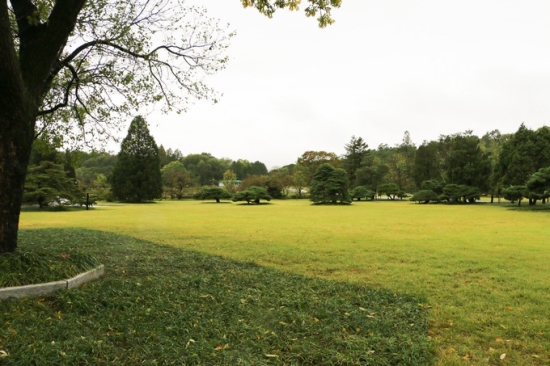
Kim Il Sung’s birthplace Mangyongdae. The
name comes from the fact that you can see ten thousand sights in the town. The
air quality here was very good. Everywhere you looked there was green grass and
the whole place seemed like a grand park.
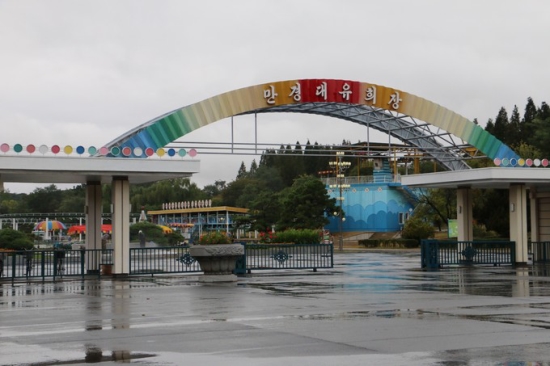
The entrance to the Mangyongdae Funfair. Didn’t look like there was anyone
inside.
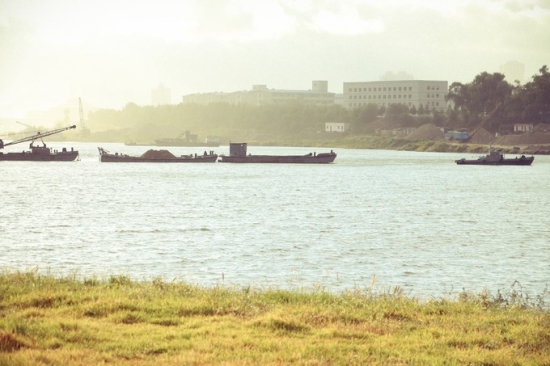
The Taedong River, or Mother’s River, as
the North Koreans call it. The river cuts through the middle of Pyongyang,
dividing it into East and West sections.
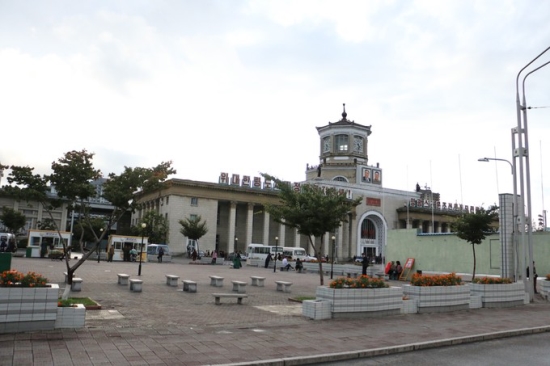
Everywhere you looked, you could see
portraits of the Kim family. This reveals the claustrophobic nature of North
Korea’s fearpolitik.
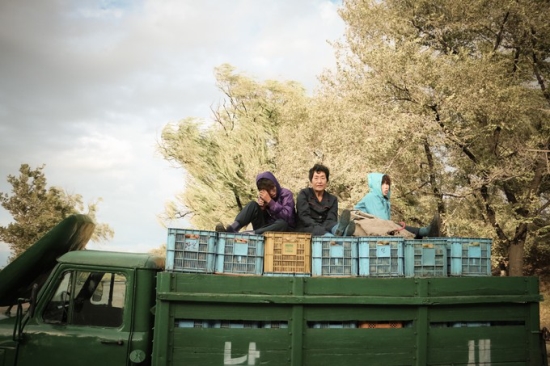
This truck was packed to the brim with
fruit. North Korea is still dependent on the state for basic supplies. In the
case that more basic supplies are needed, they can purchased at a store for a
more expensive price. The guide said that all North Koreans receive one
kilogram of fruit per month from the public distribution system. The picture I
took shows people who just received their fruit and are on their way to sell
it.

We left Pyongyang and headed for Kangwon
Province’s Masikryong. The road conditions in North Korea are terrible. There
are almost no real highways in the country, so it takes seven hours to get from
Pyongyang to Kumgang Mountain.
This road was newly made especially for the
use of tourists. So you’d have to look at that as an improvement.
We hardly saw any cars. Half of the
vehicles we saw were military and the other half were for tourists like us.
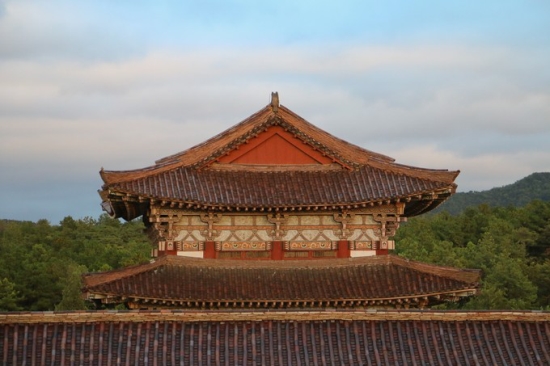
The Tomb of King Tongmyong is located in
North Korea’s capital city, Pyongyang, Yeokpogu, Mujilli. King Tongmyong
founded the Goguryeo nation. Goguryeo’s land holdings were the largest in the
history of the Korean peninsula and the nation held onto power for the longest
duration. At the time, the people of Goguryeo worshipped Kim Tongmyong as a
god. After he died, a magnificent tomb was constructed for ancestral rites to
be performed.
Originally, the tomb of King Tongmyong was
located in Geuknaeseong, China’s Killimseong, Jian City. However, as Goguryeo
expanded their power and influence, their territory spread south and moved their
capital to Pyongyang. At that time, King Tongmyong’s grave was moved to the new
capital.
In May, 1993, King Tongmyong’s grave was
reconstructed, according to North Korea’s Joseon Ethnic Culture Legacy
Preservation policy.
When I was visiting the grave, I saw one
thing of interest. The guide took off her high heels and put on sneakers. She
continued to wear the sneakers as we made our rounds, but when we returned to
Pyongyang, she put the heels back on and adjusted her clothes to look as sharp
as possible. My guess is that there is some sort of regulation about what sort
of clothes she has to wear while in the capital city.
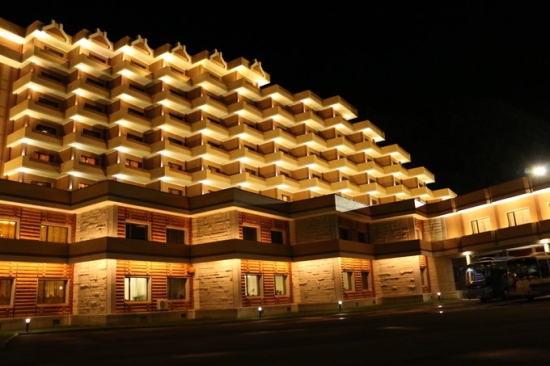
We traveled for another three hours after
leaving King Tongmyong’s tomb and finally arrived at the Masikryong Hotel. We
didn’t see a single light as we passed the farms between the two locations. It
was so dark, you could see the big dipper.
I honestly thought we were passing an area
where nobody lived. But when I looked carefully, I could see that there were
people there and there were some very faint lights. I am guessing they
were extremely weak oil lamps.


The Masikryong Hotel is the best hotel in
the country. It was constructed in 2013 along with the Ski facilities. It is
North Korea’s only ski facility of major size. The resort and ski facility has
10 slopes, a helicopter hangar, cable cars, and a swimming pool.
This ski resort ranks among Kim Jong Un’s
chief accomplishments. They say that inside of a single year he himself planned
and directed the construction of the mountain’s 10 slopes totaling 10,000
meters. In light of this, in North Korea they say “Do it at Masikryong speed.”
Before I went on my trip, I wasn’t able to
find any information online from Chinese tourists who had visited the resort.
And the truth is that there were not many Asians here. Most of the people in
the resort were Westerners, and none of the guides spoke Chinese. It doesn’t
seem like this is a hotel that was really made for the Chinese.
The best part of the hotel is the balcony.
You can feast your eyes on some excellent views from the balcony. On the
morning of the second day, I stood on the balcony and watched the people going
this way and that. I marveled at the fact that this entire facility was
completed in under a year.
I called my parents after arriving in the
hotel. It lasted less than two minutes, but it cost 42 yuan [about US $6.40].
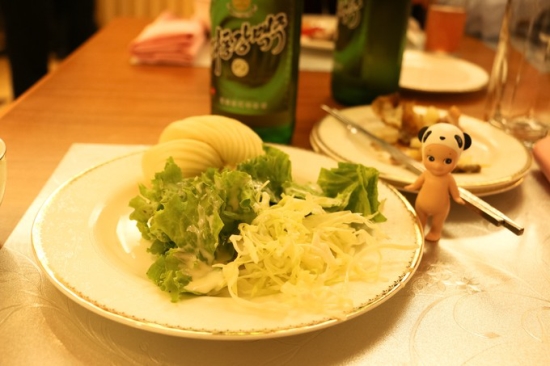

The first night’s meal was buffet style.
The Taedonggang Beer was very satisfying. There weren’t that many side dishes.
We ate duck, salad, doenjang [soybean paste] stew, sweet potato, and fried
fish. It all tasted great.


Magazines from the hotel coffee shop. The
interesting thing about this magazine is the date on it. North Korea uses Juche
time, which differs from the international standard – the Gregorian calendar.
In Juche time, year one is the birth of Kim Il Sung. This magazine, however,
shows the date in Gregorian terms.




















